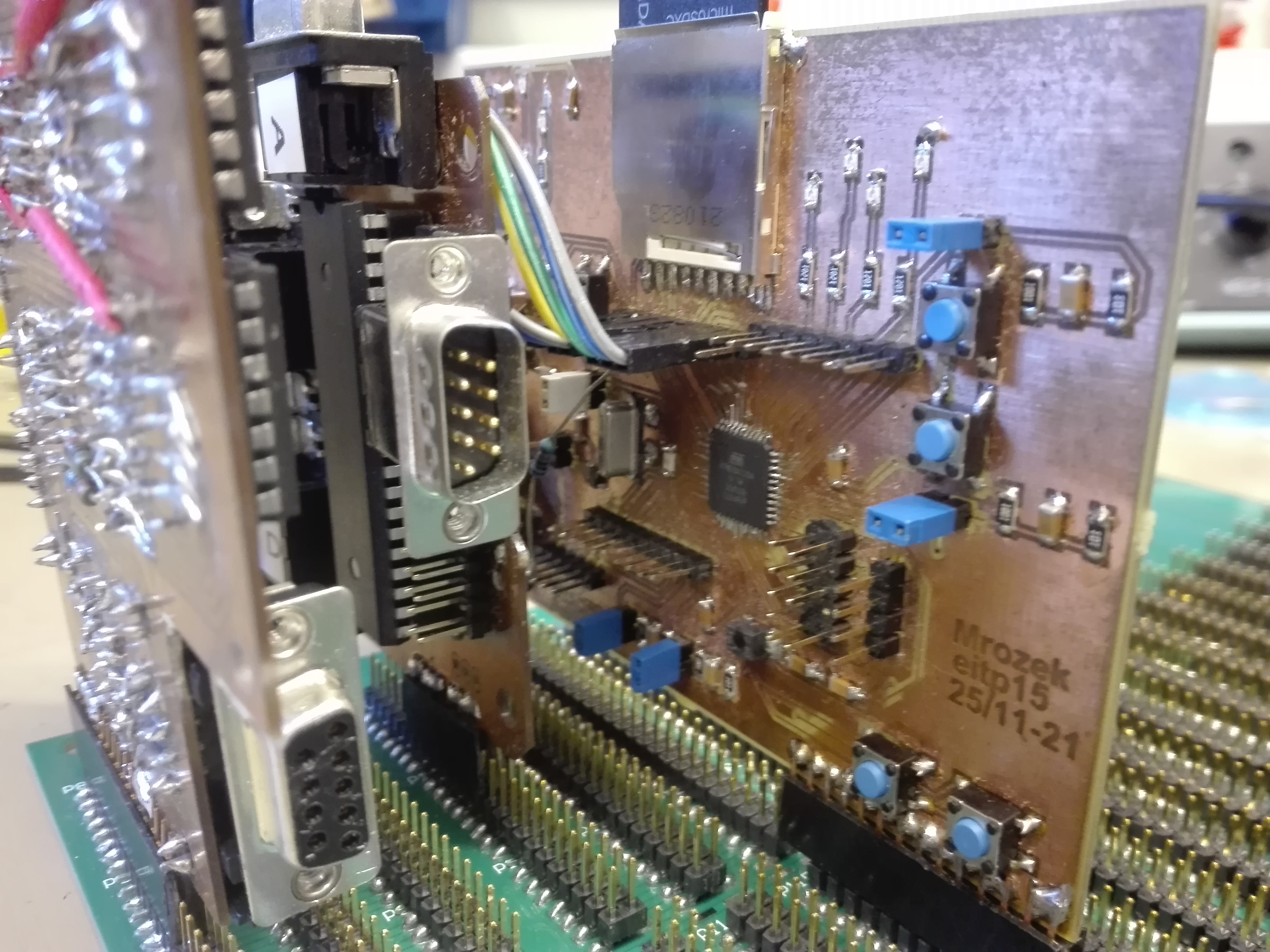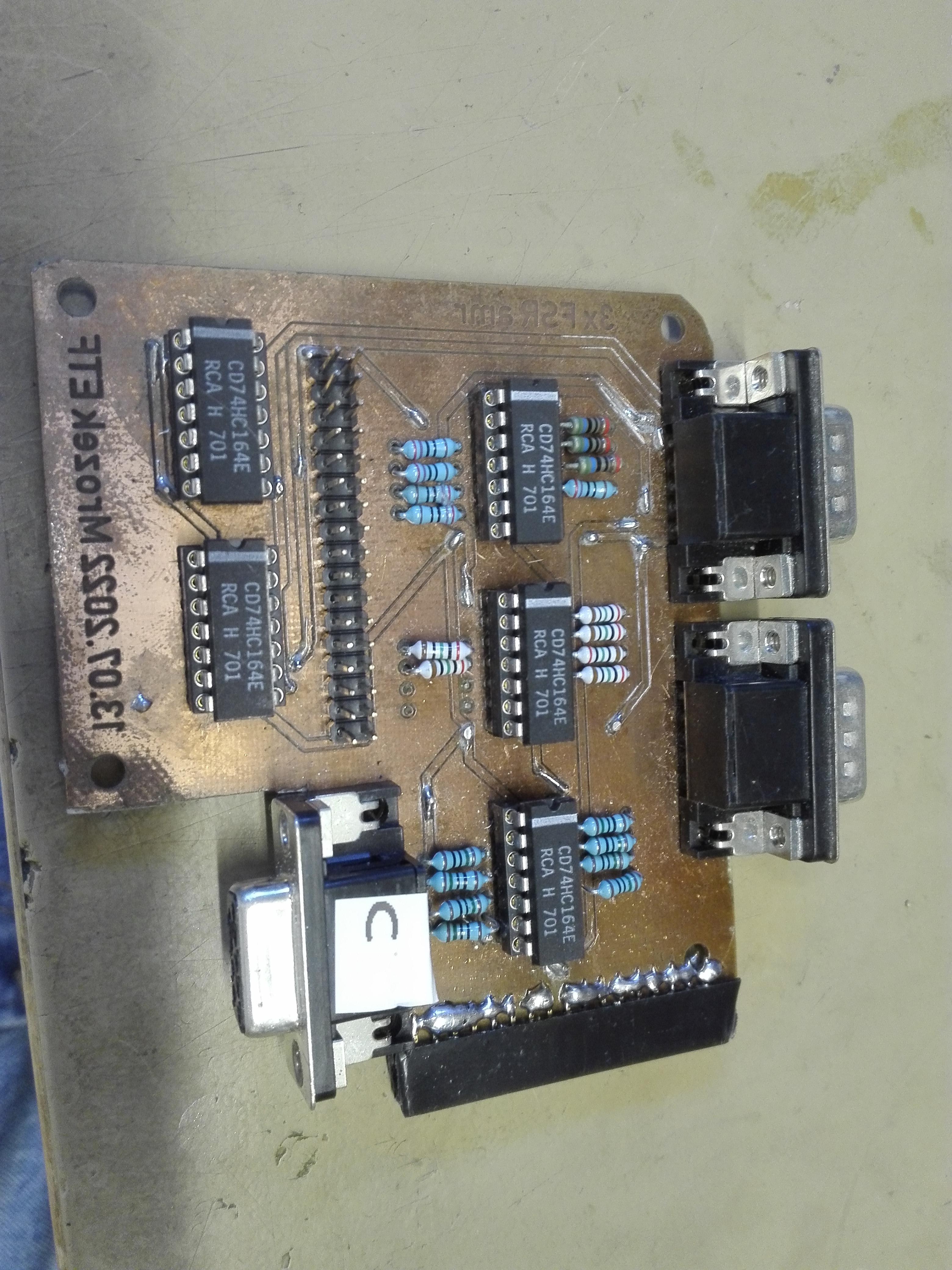
This is a computer.
Purpose: Educational + fun.
This computer consists of a motherboard = bus and extension cards. The main board only has buses and does nothing more.
Each extension card has a more or less useful purpose. You should be able to see three sample extension cards. From left:
1. Demonstration of LFSR on 7400 TTL logic.
2. Atmega 128 with JTAG and contacts for port A + B + C + D. Each atmega has 3 ports to communicate with the world.
3. Atmega with card reader, 4 buttons, crystal oscillator and USB interface to computer (this is cool).
Close up 3 extension cards:


This is a set of buses to keep your cards together. I produced plenty of cards and I started to face a problem: how to organize all of them so that I don’t need to have a pile of cards on the desktop. A pile of cards has many disadvantages: it’s unaesthetic, creates short circuits, does not have standard for power and ground supply, can be easily lost or damaged. Keeping your cards in a case solves this problem. There are lots of used computer cases, so I wanted a motherboard that would fit in one of these cases, so I don’t need to make a case myself.
Linear feedback shift registers (LFSR): These are here to extend 8 bit port of Atmega to more than 8 bits. If an Atmega gives 3 x 8 bit, this device allows you to use one 8 bit port and extend it to 64 bits. An LFSR contains 1 bit of input, and 8 bits of output. If you feed one bit to input, all output bits are shifted, your last bit is thrown away, and your input is appended as first bit.
